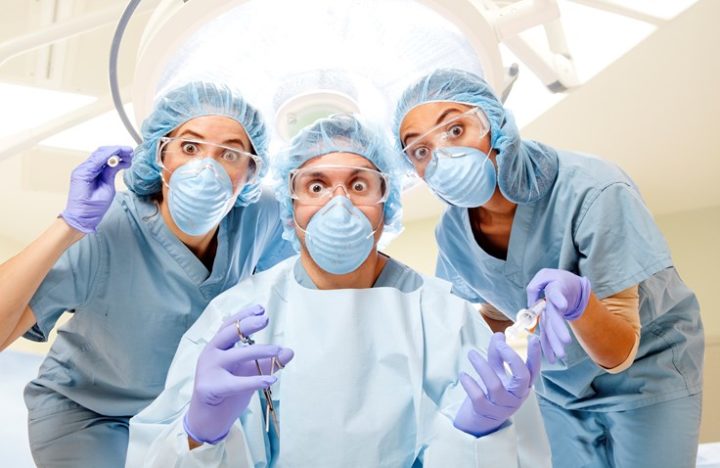In January 2014, the Affordable Care Act extended health insurance to thirty million uninsured Americans. In the aftermath, the demand for healthcare professionals has risen dramatically!
There’s also good news. Physician assistants are graduating from graduate school at a record rate and, thanks to the rigorous educational programs, they’re now more skilled than ever before.
If you’re wondering why you should be a PA and not a doctor? Here’s the answer! Physician assistants don’t differ much from physicians: They assess patients, diagnose and treat them. PAs are employed in all states and medical settings and specialization, improving access to healthcare and improving quality.
Want to learn more details about PAs? Here we have collected some fun and interesting information about Physician Assistants you should know to be aware of!!
Check it out…
Interesting Facts About Physician Assistant

Physician assistants take the patient’s histories, perform physical examinations, identify illness and formulate treatment strategies. They also conduct and interpret laboratory tests, advise patients on prevention, carry out diverse medical procedures, aid with surgical procedures, and compose prescriptions in many states.
Find out more PA information below!!
1. The professional profession of PA has over 50 years of age
Dr Eugene Stead founded the first Physician Assistant training program in 1965 at Duke University. The physician assistant profession was created in 1967, with the first class of graduates of Stead’s course.
2. Education at the Master’s level
The majority of PA programmes require at least a bachelor’s or master’s degree along with previous experience in health. The typical PA student has four years of healthcare experience and has a bachelor’s degree. The typical length of the program is 27 months, and they include more than 22,000 hours of clinical work.
The majority of PA programs are linked to colleges of medicine, and they result in the award of a master’s degree. All PA programs must confer a master’s degree before 2020.
3. It’s a very popular occupation.
In 2017, there was over 123,000 professional PAs working in the United States. In 2017 this PA occupation was identified as the 5th most rapidly growing occupation across America as per the Bureau of Labor Statistics.
4. PAs can help more people access better health care.
Physician assistants have more access to healthcare and enhance the quality of healthcare for patients. PAs are involved in over 400 million interactions with patients every year.
According to a survey conducted in 2014 by Harris Poll, 91% of patients believe that PAs can improve the quality of their healthcare. Ninety-two per cent of respondents believe they feel having a physician helps make it easier to obtain an appointment with a doctor.
The physician assistants encourage the health of patients.
While PAs offer treatments, They also promote prevention and wellness through counselling and education for patients.
5. They are employed in many different situations.
Physician assistants work within hospitals, emergency care centres, clinics, schools, outpatient offices and in every other healthcare setting. They collaborate with doctors along with healthcare staff to deliver the best healthcare possible for patients.
PAs specialize in medicine across all areas of medicine, including primary care and internal medicine, pediatrics, emergency medicine, surgical subspecialties.
6. National PA Week takes place in October each year.
We observe National Physician Assistants Week each year, from October 6th through the 12th of October. Make sure to express your appreciation to those PAs who are part of your life!
Statistical Facts About Physician Assistant

1. PAs’ education model was based on the curriculum for training newly-qualified doctors who were on battlefronts during World War II.
New PA graduates can work in almost every medical and surgical environment.
2. The Bureau of Labor Statistics predicts PAs will be the second-fastest-growing health profession in the next decade. In reality, around 4.100 PA graduate students graduated to date in the year 2016!
3. PA students must enrol in more than 400 hours of credit in the sciences of basic research and 175 hours of behavioural sciences in addition to 580 hours of medical clinic.
4. PAs must participate in more than 2000 hours in clinical training with a focus on primary treatment in ambulatory clinics, physician’s offices, and long-term and acute healthcare facilities.
5. PAs are getting training on a range of EMR systems, making them among the most technologically adept candidates to be out of the gate.
6. The modern PA is more independent! They’re able to prescribe controlled medications, oversee acute and chronic illnesses, conduct clinical consultation, and can even do minor surgery.
Things You Didn’t Know About Physician Assistants.

- In many states, physicians are authorized by the medical boards which grant doctor licenses.
- PAs can order advanced imaging (MRI CT, MRI, Ultrasound).
- PAs can prescribe medications.
- PAs will be “done with school”, and they will never “be a doctor”.
- PAs aren’t “physician’s assistants” — they are Physician Assistants.
- Physician Assistants aren’t “want-to-be” doctors. We chose the profession of PA because we would like to be PAs.
- The profession of PA was first introduced with Duke University; the first PA class received their degree from Duke on the 6th of October 1967.
- PAs prescribe and practice medicine across all 50 states as well as The District of Columbia.
- A PA is an internationally recognized and licensed medical professional by the state.
- There is only a three-month difference in the educational component of a doctor’s education instead of the one of a PA.
- PAs earn a Bachelor’s degree before going to PA school. The majority of PAs will hold two Bachelor’s degrees and one Master’s degree when they finish their course.
- We have around eight years of post-high school education.
- PAs must pass the challenging physician assistant medical Certification Exam before practising and renew their certification every six years by passing a recertification examination and recording continuing medical education every year.
- We hold DEA as well as state-issued medical licences.
- A lot of PAs have been employed as paramedics, nurses as well as athletic trainers. Before attending PA school.
- PAs can work in any medical specialty.
- PAs aid in surgical procedures.
- PAs can change different specialties because the training covers all areas of expertise.
- PAs can participate in residency-style rotations in the majority of major specialties.
- The Board of Medicine, which regulates doctors as well, supervises Physician Assistants.
- We can carry out procedures like the injection of a fracture, modification of cardiac and radiologic procedures, casting, and much more.
Finalizing:
This is it for today. We hope you have enjoyed reading these fascinating and unexplored details about the profession of Physician Assistants. As a patient, it is important to be aware of these facts before getting your treatment!!
Keep an eye out for more awesome items!!
Also read, 10 Interesting Facts About Office That You Surely Didn’t Know Before!!
